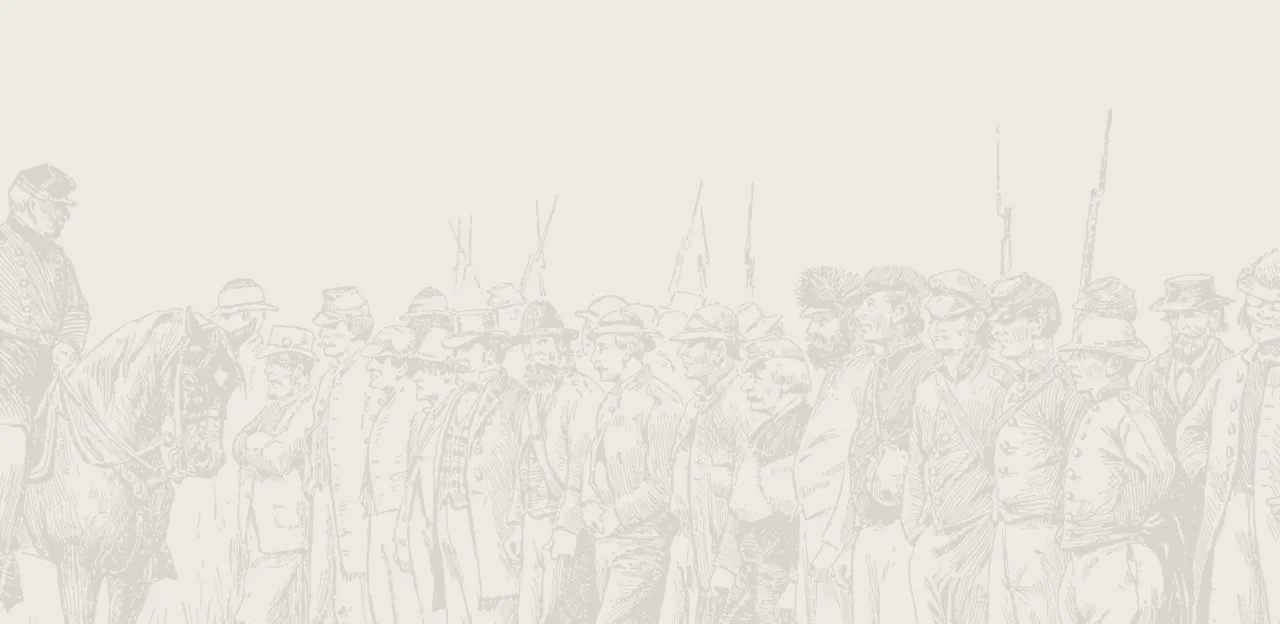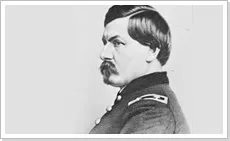Antietam

The Battle of Antietam
Sharpsburg

After his success at Second Manassas, Gen. Robert E. Lee led the Army of Northern Virginia north across the Potomac River on an invasion of Maryland in early September of 1862. Defeated in his attempt to hold Maj. Gen. George B. McClellan and his Army of the Potomac on the east side of South Mountain, Lee was forced to consolidate his outmanned force. Rather than return to Virginia, the typically aggressive Lee chose to make a stand on ground of his choosing in the hopes of defeating the cautious McClellan.
West of the mountain, Lee, with Gen. James Longstreet’s wing recently pulled back from Hagerstown, awaited the arrival of Gen. “Stonewall” Jackson’s men from Harper’s Ferry 12 miles away. Lee had chosen a new defensive position carefully. First, he needed a position that would be difficult to attack. Second, Longstreet and Jackson’s wings must unite and support each other. Third, to return safely to Virginia, Lee needed a secure Potomac River crossing. The small village of Sharpsburg met all of Lee’s requirements. A mile east of the town, Antietam Creek meandered through the hilly but open countryside, good for long-range artillery and moving infantry. The creek was deep, swift and crossable only at three stone bridges, making it a natural defensible position. At Sharpsburg, the north-south turnpike to Hagerstown was crossed by numerous farm roads, providing routes that Longstreet and Jackson could use to unite and move reinforcements. And at Boteler’s Ford, three miles west of the town, Lee could use the only fordable crossing of the Potomac between Harper’s Ferry and Williamsport. On September 15, Lee placed his army behind Antietam Creek and waited for McClellan to arrive.
On September 16, 1862, McClellan’s army of around 65,000 confronted Lee with about 40,000 men across the Antietam. That afternoon, McClellan revealed his plans to attack Lee’s left by moving Maj. Gen. Joseph Hooker’s I Corps across the northern bridge. Hooker’s men briefly clashed with some of Longstreet’s men near the East Woods. That evening, the vanguard of Jackson’s wing arrived on the field and held Lee’s left, while Longstreet shifted to the south on the right.
At dawn on September 17, Hooker’s corps mounted a powerful assault on Lee’s left flank that began the battle. Repeated Union attacks and equally vicious Confederate counterattacks swept back and forth across farmer David Miller’s cornfield and the Hagerstown Turnpike. Thousands of attacking Federals were cut down in the tall corn rows. Hooker committed his I Corps, while Maj. Gen. Joseph Mansfield ordered in his XII Corps toward the Dunker Church. Reinforcements for Jackson were sent from the right. Union II Corps commander Maj. Gen. Edwin Sumner ordered a division into the nearby West Woods where they met Jackson’s men in a vicious firefight. Sumner’s division pulled back, suffering over 50% casualties. Despite the great Union numerical advantage, Jackson’s forces in the woods and near the church held their ground.
Meanwhile, towards the center of the battlefield, two more of Sumner’s divisions were sent forward against the Confederate position in a sunken farm lane. Hundreds of Union attackers, including soldiers in the famed Irish Brigade, were cut down as they crested a ridge in front of the Rebel defenders. A flanking maneuver briefly allowed the Federals to pierce the Sunken Road line, but it was not followed by substantial reinforcements or a further advance.
Further south, in the early afternoon, Maj. Gen. Ambrose Burnside’s IX Corps pushed across the southernmost bridge after several aborted attempts. Burnside’s men managed to imperil the Confederate right and pushed forward toward Sharpsburg and Lee’s escape route to the Potomac. At a crucial moment, Gen. A.P. Hill’s division, the last Confederates of Jackson’s wing, arrived from Harpers Ferry and counterattacked, driving back Burnside and saving the day for the Army of Northern Virginia.
Despite being outnumbered nearly two-to-one, Lee committed his entire army at Antietam, while McClellan sent in around three-quarters of his Federal force. McClellan’s piecemeal approach to the battle failed to fully leverage his superior numbers and allowed Lee to shift forces from threat to threat. During the night, both armies tended to their wounded and consolidated their lines. About 23,000 men from both sides were killed, wounded or missing, making September 17 the bloodiest single day in American military history, before or since. Lee held his ground through the 18th but no Federal attack came. That night and the next day, Lee pulled out of his lines and moved the bulk of his army across the river to the safety of the Virginia shore.
McClellan, much to the chagrin of President Abraham Lincoln, did not vigorously pursue the wounded Confederate army. While the Battle of Antietam is considered a tactical draw, Abraham Lincoln claimed a strategic victory. This hard-fought battle, which drove Lee’s forces from Maryland, gave Lincoln the “win” that he needed to deliver the Emancipation Proclamation — a document that would forever change the course of the Civil War.


